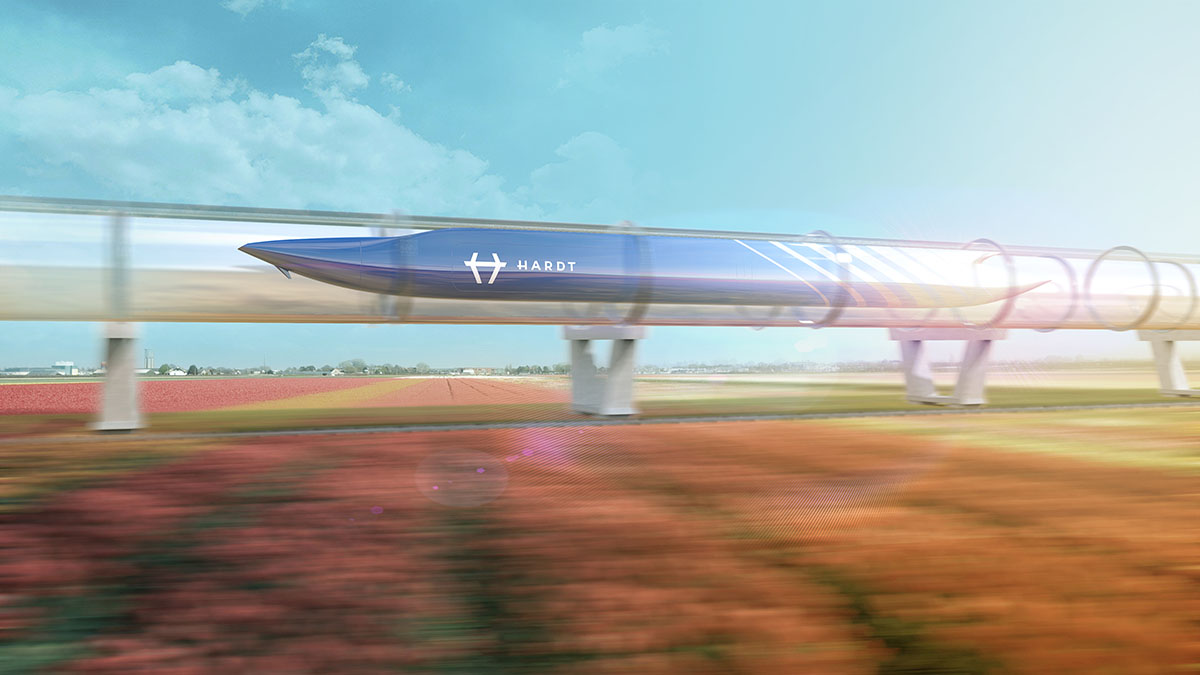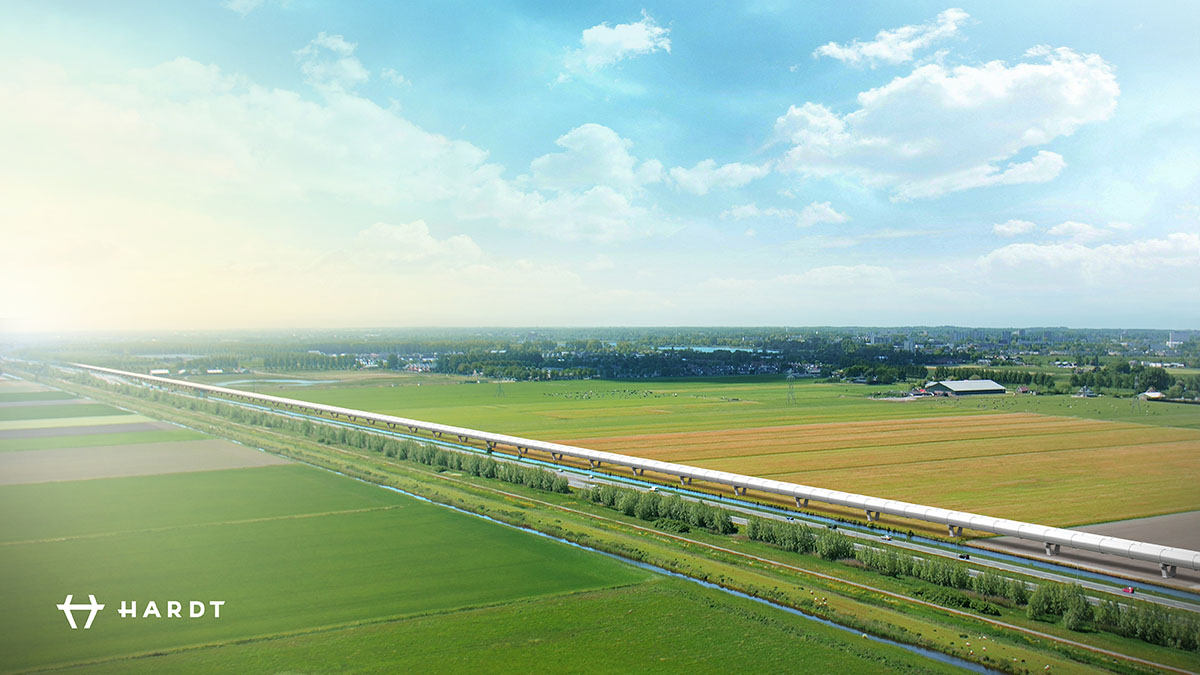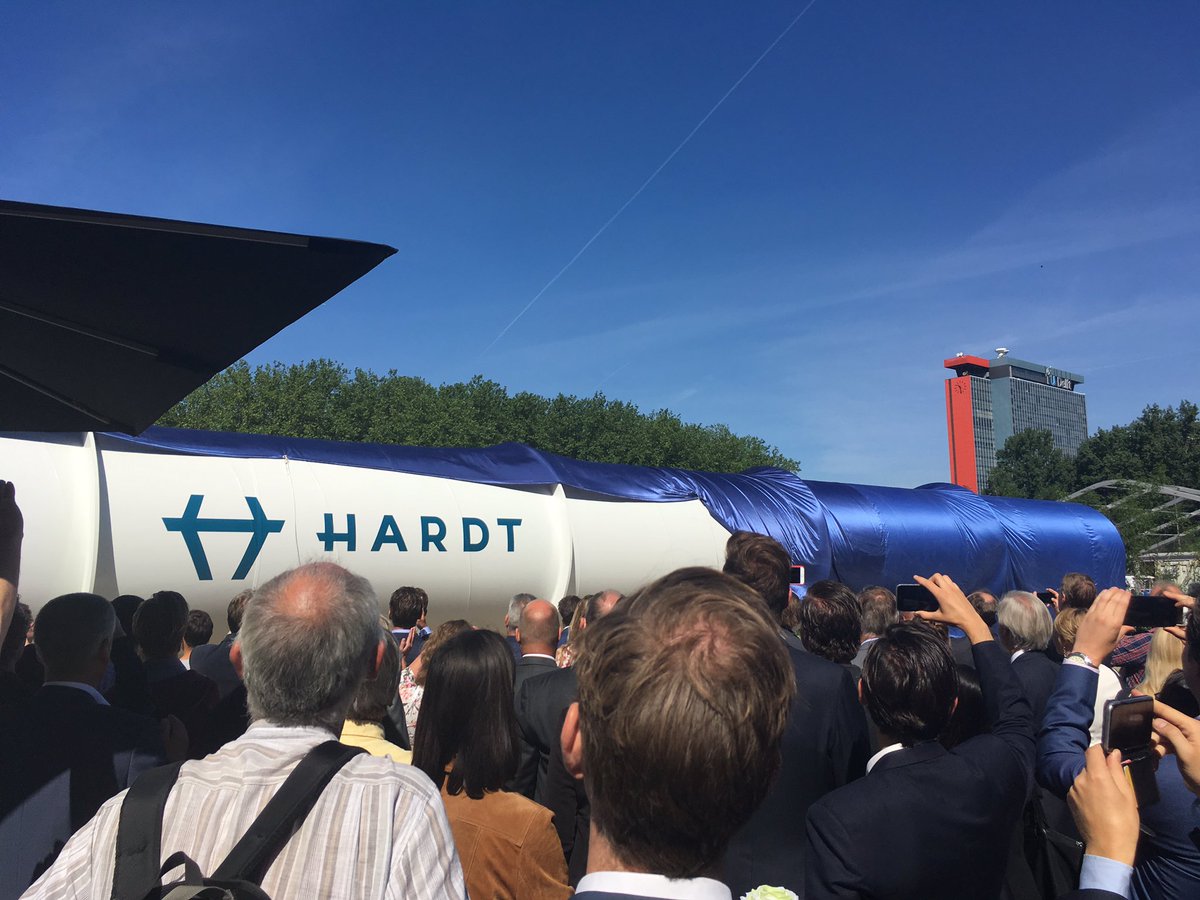Submitted by WA Contents
Europe’s first hyperloop test facility unveiled by Hardt on the TU Delft campus
Netherlands Architecture News - Jun 10, 2017 - 10:46 14537 views

Hardt Global Mobility has unveiled Europe’s first hyperloop test facility on the TU Delft campus - a 30-metre long test facility to test the technology for this futuristic transport system. Hardt was founded as a company by a number of the winners from Elon Musk’s hyperloop competition earlier this year.
The company together with the European construction company BAM will explore and research many aspects of the current state of the technology, spatial planning, and the organisation of a hyperloop system.
Test tube 2021 aerial view
Hardt is the first European company to develop the hyperloop and has also announced its plans to create an operational hyperloop system. Before the unveiling, the Dutch Ministry of Infrastructure and the Environment announced that, in cooperation with Hardt and the American company Hyperloop One, it was starting research into the possibilities for the hyperloop in the Netherlands.

Picture of the test facility made by Roderik van Nispen
"In terms of transportation, a new age has begun with self-driving vehicles, platooning trucks, and drones. In the Netherlands, we want to be the European test bed for these innovative and sustainable forms of transport and so build up more knowledge about them. The hyperloop is fast, innovative, silent and sustainable and so very interesting for the transportation needs of the future," said Minister Schultz van Haegen.
The test facility of Hardt and BAM in Delft consists of a tube with a length of 30 metres and an external diameter of 3.2 metres. This test facility will allow Hardt to test all the important systems in a vacuum at low speeds. This includes testing the safety, the propulsion, the gliding and the stabilisation of the hyperloop vehicle.
In conjunction with TU Delft and BAM, Hardt is also studying social issues concerning the new vehicle. In order to study the integration of the hyperloop into a living and working environment, the test facility is located at The Green Village on the campus of TU Delft. This 'living laboratory' serves as a test bed for radical innovations that are focussed on a sustainable future. This location provides scope for research into, for example, the social integration and social acceptance of the new transport method.

Picture unveiling cloth hyperloop test facility made by Ferrie Fîrster
A hyperloop will enable people and goods to travel at speeds of more than a thousand kilometres per hour through tubes with very low air resistance. This makes the transport system more energy efficient than, for example, travelling by airplane or the train. A hyperloop network in the Netherlands would allow the Randstad to be reached in less than half an hour from all corners of the country.
The hyperloop can also help relieve large cities because people can work in the city but live much further away because of the much faster connection for commuters. A hyperloop network in Europe would mean that people could travel over an entire continent with the same ease that underground train travel currently offers in big cities. Unlike train travel, the hyperloop would not make any intermediate stops during its journey, but would arrive at its destination uninterrupted.

European network vision
"We are creating a world where distance no longer matters. One where you will have the freedom to live and work wherever you want to," added Tim Houter, CEO of Hardt.
Hardt’s goal is to begin building a hyperloop route between two cities within the next four years. The test facility unveiled today is the first in a series planned to build the first hyperloop route step by step. After completing the low-speed tests, Hardt will aim to build a test facility that will enable the testing of all the systems at high speed.
This test facility will be used to test aspects such as the technology involved in cornering and the changing of lanes within the vacuum tube at top speed. When all the techniques have been proven, the building of a route between two cities to transport both people and goods can begin.
All images courtesy of Hardt Global Mobility
> via Hardt Global Mobility
